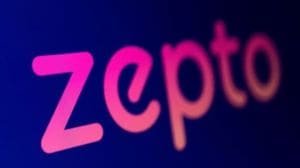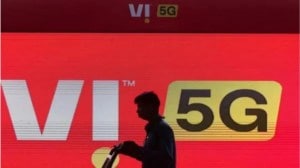India and Iran sign $18-bn gas deal, set up group on pipeline
India finally inked the deal with Iran to import 5 million tonnes per annum (tpa) of liquefied natural gas (LNG), starting 2009, over a peri...

India finally inked the deal with Iran to import 5 million tonnes per annum (tpa) of liquefied natural gas (LNG), starting 2009, over a period of 25 years. Valued at $18 billion, this is one of India’s largest commercial agreements.
India also set up a special Joint Working Group with Iran to take the Iran-India pipeline talks forward. The group will have its first meeting in Delhi between June 23-35. Moreover, Iranian Oil Minister Bijan Namdar Zengeneh will go to Pakistan next week to take the dialogue forward.
‘‘The discussion on the pipeline will be intensified,’’ said Petroleum Minister Mani Shankar Aiyar. His counterpart Zengeneh added: ‘‘It’s a difficult task and it’s going to take time to execute but in this new atmosphere, especially between India and Pakistan, the pipeline is not a dream — it’s going to be a project on the ground.’’
The right noises on the pipeline deflected some of the attention from the fact that India was unable to secure the import of an additional 2.5 million tpa of LNG. While negotiations are stuck on price, India hopes to finalise the deal after the heat and dust of the Iran elections later this week.
In all, five agreements were signed between the two countries. LNG supplies to India will be from Block 12 of South Pars field, and will be received at the Kochi and Dahej ports.
The buyers — Gail, IOC, BPCL — will pay $3.251 per million British thermal unit (FOB) as was agreed when the memorandum of understanding for the deal was signed in January 2005.
|
Meanwhile, US waves sanctions at Pak on pipe
|
||
|
• Quoting diplomats, Dawn reported that US Secy of State Condoleezza Rice told Pak Foreign Minister Khurshid Kasuri that Pak efforts to firm up the India-Iran gas pipeline could violate Iran and Libya Sanctions Act of 1996 and invite sanctions. Story continues below this ad |
||
This is higher than the $2.53 per unit fixed price for LNG imports from Qatar for five years up to 2008.
In return, Iran will give development rights in two oil-producing fields. So, ONGC Videsh Ltd will get a 10 per cent share in the development of Iran’s biggest onshore oil field, Yadavaran (translating into 30,000 barrels per day of crude oil for India. And also 100 per cent development share in Jufeyr (another 30,000 barrels per day).
Another big agreement signed between India and Iran is the award of a block in North Pars to a joint venture between IOC and Petropars for the import of 9 million tpa of LNG. India had sought a block in South Pars, but they were all taken, so this is the first time that the North Pars has been offered to India for development.
Finally, both sides are also looking at cooperation in the petrochemicals field with Indian companies working on options for investment in Iran.
The final round of negotiations dragged on through the day, with ministers taking catnaps on the first floor of the well-appointed NIOC guest house while the draftsmen worked line-by-line.
Taking a break from the talks, Zengeneh was cautiously optimistic about the prospects of the Iran-India pipeline. When asked about US pressure, he said: ‘‘The energy market should be depoliticised. For the region, it means better price and cheaper gas. Why should anyone oppose it?.’’
Iran, more than anyone else, is under no illusions on the long road ahead. ‘‘It will take a little time to execute it,’’ said Zengeneh.



- 01
- 02
- 03
- 04
- 05




























